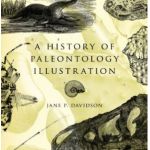Book
Even though I sometimes feel quite anxious about the publication of Written in Stone, the positive comments the manuscript has received so far have helped to relieve my apprehension. Professional reviews will not show up for another few months, of course, but during the process of composing the book - from pitching to my agent to asking my wife to read the completed copyedit-ready draft - I am glad to say that the early responses have been overwhelmingly positive. Nevertheless, when the time came to ask scientists and science writers for blurbs, my nervousness spiked again. These are people…
I can't help it - every time I pass a bookstore, I wonder whether they are going to carry my book when it comes out this autumn. November is still a long way away - summer does not even officially begin until next week - but I can't help but wonder where my book will pop up and how it will be received. It is both exciting and anxiety-inducing.
I try not to speculate too much about what will happen when Written in Stone comes out. It is not even entirely finished yet. Right now the original text and scribbled margin notes from the last copyedited version are being transformed into page proofs…
In the part of suburban New Jersey I grew up in, almost every other school took the cougar for its sports team mascot. There were the Carl H. Kumpf Middle School Cougars, the Cranford High School Cougars, and the Kean University Cougars, among others. Nevermind that cougars were extirpated from the state long ago - they were a top choice as symbols of the agility, cunning, and ferocity sports teams like to believe they channel. The use of such totems extends beyond sports. Exxon tells us we can "put a tiger in the tank" by using their fuel, and many people adorn themselves with clothing or…
Very quick post here: the third beta of my AppEngine book "Code in the Cloud" was released this morning. If you've bought a copy of the beta, you can go to your pragmatic account, and download a fresh copy with all of the fixes and new material.
If you haven't bought a copy... Well, if you're interested in cloud programming, I'd like to think that this book is a pretty good overview of the subject. It's about Google AppEngine, but I've done my best to write it so that it discusses the nature of cloud programming in general, using AppEngine as a specific example of a cloud platform. Buying a…
Now that the details about Australopithecus sediba have been published, I am faced with an important question - how am I going to fit the new hominin into Written in Stone?
When I started composing Written in Stone I was determined to make it as up-to-date as possible. This was not only out of a concern for accuracy, but also stemmed from a desire to present the public with some discoveries that they may not have heard about before. Given that new paleontological papers are being published every week, however, I have often been faced with the question of how to incorporate interesting new…
The time has come to wrap-up this blog series, but there was one other topic I wanted to cover before concluding; how do you let people know about the mass of ink-blotted, dead tree pulp that is your book?
Promoting Written in Stone will be a tough job. When it hits shelves this fall it will undoubtedly be in competition with numerous other science titles for the chance of being reviewed in the few publications which still review science books at all. Book tours, too, have become nearly extinct, and as a virtually unknown science writer I don't expect many (any?) people to show up at their…
Earlier this week David Williams (Stories in Stone), Michael Welland (Sand), and I started a blog series about the details of publishing a popular science book (Parts 1, 2, and 3), but I have been a bit underwhelmed by the response. I had been hoping for some input from other published authors, questions or comments from aspiring book writers, and for the series to take the form of a conversation. Instead I feel like I am talking to myself. Is there anything anyone would like to know about the process of writing a pop-sci book? Or would you all prefer that I just get back to the science…
Blogs, as Carl Zimmer astutely noted at this year's ScienceOnline conference, are software. Despite all the hand-wringing over whether science bloggers can or should replace science journalists the fact of the matter is that science blogs are the independent expressions of a variety of writers about subjects which they feel passionate about. There is no single science blog archetype that all blogs must fit, and this flexibility allows science writers the freedom to compose and promote their work in an increasingly fragmented media landscape.
Hindsight being what it is, of course, I can look…
After a brief insurrection by their blue collar offspring, zombies, vampires have once more regained their prominence as the monster supreme, leaping out at us from every bookshelf, cinema screen and TV set. What better time then for Mark Jenkins to unleash his accomplished study of the bloodsucker legend, Vampire Forensics.
Published through National Geographic Books and accompanied by a television documentary, Vampire Forensics delves into the long history of the vampire, one which began millennia before a certain Bram Stoker set pen to parchment. Drawing upon the latest research in…
On Tuesday, Feb. 23, National Geographic Explorer will be devoting an episode to "Vampire Forensics." You can preview a brief clip below the fold, but I'll warn you now: it's not CSI. It's more scientific ("unfortunately this evidence is inconclusive" LOL) and less sexy (inexplicably, Emily Proctor is nowhere to be seen). Overall, the feeling I got from the clip was sort of "Wow, we're National Geographic Explorer, that's pretty great, but we really wish we were sexy, like CSI. Does this sinister music help?"
In conjunction with the Explorer episode, National Geographic is releasing a book…
Virtual reality trailblazer Jaron Lanier has a somewhat curmudgeonly, critical new book out called You Are Not a Gadget: A Manifesto. Here's an excerpt:
If you want to know what's really going on in a society or ideology, follow the money. If money is flowing to advertising instead of to musicians, journalists, and artists, then a society is more concerned with manipulation than with truth or beauty. If content is worthless, then people will start to become empty-headed and contentless. The combination of hive mind and advertising has resulted in a new kind of social contract. The basic idea…
Look in any biomedical laboratory, and you will find HeLa cells. Over 50 million tonnes of these cells have been grown in churning vats of liquid all over the world. They have been one of the most important tools in modern medicine, pushing forward our understanding of cancer and other diseases, and underpinning the polio vaccine, IVF, cloning, and more. None of these advanced would have been feasible without HeLa. Most scientists have used or seen them but most have no idea about their origin. It's time to find out.
In early 1951, there was only one place in the world where HeLa cells could…
The National Library of Medicine's "Turning the Pages" gallery lets you turn the virtual pages of classic science/medicine manuscripts. Check out Hieronymus Brunschwig's Liber de Arte Distillandi de Compositis (1512):
Note that the NLM's copy is hand-colored; uncolored copies also exist, such as this copy at ECHO. Comparison with the images of the ECHO copy show that NLM has elided the boring, text-only pages from their animation.
I'm not usually a big fan of animations that try to replicate the tactile experience of books, but given that you aren't usually allowed to touch manuscripts of…
Going Rogue: An American Life is the name of Sarah Palin's new book, due out on November 17th.
Here's the publisher's summary:
From her humble beginnings to her time in the spotlight as the first female Republican Vice Presidential candidate, Sarah Palin has led an extraordinary life. Going Rogue will recount her political experiences, her time as Mayor of Wasilla and as the first female governor of Alaska, as well as her rapid rise on the national stage during the 2008 campaign. Additionally, she'll share insights into the personal challenges she's faced including balancing her time as a…
The initial reviews of Chris Mooney and Sheril Kirshenbaum's new book Unscientific America: How Scientific Illiteracy Threatens our Future produced a small blogospheric kerfuffle last month. But I think Unscientific America has much more constructive and useful things to offer than provoking more arguments, and there are a lot of reviews focusing on the positives. This surprisingly short but wide-ranging book is a nutshell primer on science policy and communication issues, perfect for dissatisfied lab rats who want to engage in advocacy but don't have communications or policy training outside…
OMG! This Chris Beckett story is totally about me!
You can read the title story of The Turing Test online, and it's well worth checking out. In a dystopian future, Jessica runs a gallery where art increasingly involves human body parts and is designed to shock and appall bystanders.
Now I have to go read it. . .
via iO9
I promised you some updates on the Google Books Settlement, so here you go. Things are definitely getting interesting.
First, I mentioned earlier that I was going to attend a panel on the Google Book Search Settlement here in DC, featuring representatives of Google, the publishers, and the Internet Archive. ITIF, which organized the panel, has made the entire thing available online; I've linked to it at the bottom of the post, because it's over an hour long.
Anyway, it was interesting to hear the (very civil) differences of opinion between Dan Clancy, the Engineering Director for Google Book…
Check out Brian's new review of A History of Paleontology Illustration (Life of the Past) by Jane Davidson, in Palaeontologia Electronica:
It is rare for fossils to be featured in fine art, but in the 15th century painting A Goldsmith in His Shop, Possibly Saint Eligius by the Flemish master Petrus Christus there is, if you look carefully, a fossil shark tooth among the objects scattered on the shop's table. The fossil plays a nearly insignificant role in the painting, but it reflects the general interpretation of such natural curiosities at the time. From this modest starting point,…
This post is something that I'm thinking of including in my
book. I haven't decided whether I want to spend this much time on
logics; they're really interesting and fun - but there's lots of
other interesting and fun stuff, and there's only so much space.
The topic of the moment is temporal logic - that is, a logic which
is built for reasoning about things that change over time.
To begin with, why do we want temporal logic? Most of the time,
when we want to use logical reasoning, we use predicate logic. So why
do we need another logic?
Why Temporal Logic?
One of the basic properties of…
Christmas greeting card, school unknown, circa 1920.
Dittrick Medical History Center
from Dissection: Photographs of a Rite of Passage in American Medicine 1880-1930
Slate has an intriguing new review by Barron Lerner of a book called Dissection: Photographs of a Rite of Passage in American Medicine 1880-1930, by John Harley Warner and James M. Edmonson. The book delves into the turn-of-the-century practice of photographing medical students with cadavers - photos that today read as weird, grotesque, even offensive.
The photos unearthed by Warner and Edmonson depict an astonishing variety of…



